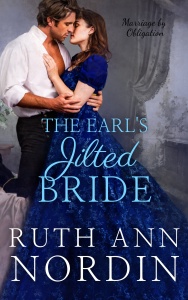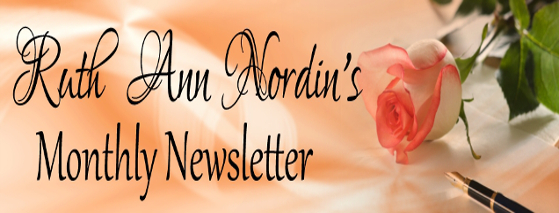While going through the administrative part of this blog, I saw that someone out there was searching for information about villains, and I thought this sounded like a fun topic to discuss.
So, today, I’m going to discuss the villain. In essence, a villain is the person or thing that stands in the hero’s way.
When we begin the story, we’re introduced to the hero, and usually, we’re given the hero’s normal world. Then, pretty soon, we should come to something that starts the hero on his journey. This is the hero’s goal. Regardless of the genre, the hero has to have a goal in order to give the book a plot. And in order for the story to be interesting, someone or something has to stand in the hero’s way of achieving this goal.
That someone or something is the villain. Some people call this the nemesis. Typically, we think of a villain as a person or a creature, but it can be anything that produces the source of conflict in the story. It can be an animal, such as a genetically modified dog that is hunting a group of hikers. It can be weather, such as a tornado that is making it hard for a father to get to his child. It can be a car that has a personality of its own and doesn’t want the hero to end up with the girl of his dreams. There are many things the villain can be. It can even be something the hero must overcome within himself. This “something” can be mental, emotional, physical, or spiritual. Off the top of my head, an example of a mental villain might be someone with a memory loss having to figure out the pieces of a puzzle in order to prove he didn’t kill his wife. Emotionally, the villain could be the pain someone went through in a divorce that is preventing the hero from falling in love again.
So really, the villain is a pretty broad range of things. The writer’s task is to pair the right villain up with the hero’s greatest weakness. The villain has to present something that could be the undoing of the hero. The higher the stakes, the more exciting the story is. You can’t just throw any obstacle at the hero. The obstacle has to target the hero’s weakness.
In real life, everyone faces problems. Depending on our personalities, we’ll deal with these problems differently. Someone who isn’t all that concerned with finances is going to shrug off a huge repair bill, but someone who is concerned with finances is going to freak out when confronted with an unexpected bill that throws them off of their carefully laid out budgeting plans. Or let’s say we have an issue with faith. Let’s say that someone claiming to be a “prophet of God” insists that Event A is going to happen, but it never comes to pass. Someone who doesn’t believe in God isn’t going to be impacted by this. But someone who does believe in God might be confronted with a crisis of faith where he has to carefully evaluate what he believes in and why.
So when you’re looking at the kind of villain to give your hero, it’s necessary to know your hero’s vulnerable area. This villain is only effective if he/it can punch a hole right into that vulnerable spot. You can’t just give the hero a series of “problems” and say something is happening. There might be something happening, but it’s not the least bit interesting if those problems are just “meh” to our hero. You want to concentrate on one major problem the hero needs to overcome because this one problem is the plot of the book. You can put in smaller obstacles along the way that propel our hero forward to the conclusion of resolving the major problem. But you have to give an obstacle to the hero in every single chapter. You need some chapters where things calm down. The hero (and the reader) needs time to decompress from a high stress event. No one can run on adrenaline all the time.
Storytelling is like a range of hills. The valleys are your low tension events. The peaks of the hills are the high tension events. A short story will only have one hill. A long story will have a series of them. During the valleys, the hero is given time to rest while the villain is working on the next obstacle. Each obstacle should work toward increasing the conflict. It’s like turning the heat up in a pot. The beginning of the story starts at a simmer, the middle is where things are starting boil, and the end is where its boiling. The very end of the story is the climax, and this is the largest hill. It is where the final battle between the hero and villain takes place. If the hero wins, the villain is conquered once and for all. This is the happy ending. If the villain wins, the hero is defeated once and for all. The hero will never reach his goal. It’s game over. This is the sad ending.
One thing I want to note about sad endings is that they are not always bad. Something a sad ending is actually the most effective way to end a story. It can be the twist that is needed to make the biggest impact. The writer’s goal in any story is to give the most effective ending possible. Romance is the only genre that you must have a happy ending for. The couple must end up together. If the couple doesn’t end up together, you have a love story. It is not a romance. I have yet to read a fantasy that has a sad ending, so this might be a rule in fantasy, too. But other genres seem to be more flexible in allowing the villain to win.






Horror LOVES its villains. And we’re definitely not afraid to let the villain win sometimes. Or to let them lose, but still have a minor victory that brings down the hero’s total victory sometimes.
I was thinking of horror when I thought of the villain winning. It seems to be the genre where that scenario plays out the most. By the way, as I was writing this post, I thought of your hero in the hurricane story and how the villain he faced was his fear of going outside. That’s what prompted me to add the part about the villain being more than a person. I get fascinated by the way characters (good and bad) are used in various stories. Probably the best thing about horror is that the villain really stands out. In romance, it’s harder to detect unless we’re dealing with a person.
Or the expectations of society, such as in stories where lovers are of different social classes and shouldn’t be together.
Yes, that’s true! That’s popular in Regencies where a titled gentleman or a noble lady falls in love with someone they shouldn’t.
And it can be applied to so many places, eras and divisions as well.